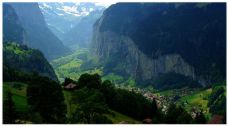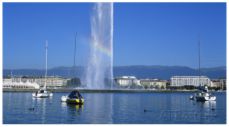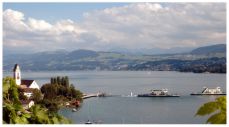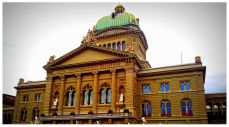Little, mountainous, efficient Switzerland is one of Europe's most appealing destinations. Wedged neatly between Germany, Austria, France, and Italy, Switzerland melds the best of all worlds — and adds a healthy dose of chocolate, cowbells, and cable cars. Fiercely independent and decidedly high-tech, the Swiss stubbornly hold on to their quaint traditions, too. Join cheesemakers in a high valley, try to call the shepherds on an alphorn, and hike through some of the world's most stunning mountain scenery.
At a Glance
PLAN YOUR TOUR
3 Days:Berner Oberland 5 Days, add:Luzern and Central Switzerland 7 Days, add: Bern and Lake Geneva area, connecting with Golden Pass scenic rail journey 10 Days, add:Zermatt and Appenzell, linking them with the Glacier Express train 14 Days, add:Lugano and Pontresina area, connecting with Bernina Express and William Tell Express train rides 16 Days, add:Zürich and Murten 21 Days, add:More day trips (French Swiss countryside), more hikes, and time to slow down
Things To Do:
*Gimmelwald and the Berner Oberland Rustic village spectacularly perched on a cliff in this mountainous region — popular for its alpine towns and scenic hikes, lifts, and train rides; touristy Interlaken is the region's gateway.
*Bern Cozy capital of Switzerland tucked in a sharp river bend, with arcaded shopping promenades, medieval clock towers, and museums devoted to Albert Einstein and artist Paul Klee.
*Zürich Bustling cosmopolitan city — Switzerland's largest by far — with upscale shops and a charming riverside old-town quarter full of pointy church spires and pealing bells.
*Luzern and Central Switzerland Touristy yet worthwhile town of historic wooden bridges, picturesque streets, and vintage steamships that ply lovely Lake Luzern, ringed by mountains with stunning vistas accessible by high-altitude lifts.
*Murten Quaint, small walled town sitting right next to the German/French linguistic fault line, with nearby Roman ruins and museum in Avenches.
*Lake Geneva and French Switzerland Small-but-sophisticated lakeside city of Lausanne, Switzerland's best castle experience at Château de Chillon, the cute cheesemaking center of Gruyères, and pleasant scenery in the surrounding countryside.
*Appenzell The most traditional Swiss region, known for pastoral scenery, small towns, cows, folk museums, and, just a cable-car ride away, a rustic cliffside retreat at Ebenalp.
*Scenic Rail Journeys Four famous train rides, each offering panoramic views and crisscrossing the country.
*Zermatt and the Matterhorn Glitzy ski resort that sports some traditional old-fashioned touches, in a valley at the foot of the famous Matterhorn.
*Lugano Leading city of Italian-speaking Switzerland, with a tidy if dull urban core, scenic boat trips on Lake Lugano, and mountain lifts to lakeside peaks.
*Pontresina, Samedan, and St. Moritz Romansh-speaking mountain resort region, anchored by three towns: touristy Pontresina, humble Samedan, and swanky St. Moritz.
When to Go
The summer "tourist season" runs roughly from May through September, though in mountainous areas, it doesn’t start until sometime in June. High summer (July–Aug) has its advantages: the best weather, snow-free alpine trails, very long days (light until after 21:00), and the busiest schedule of tourist fun. In late May, June, September, and early October, travelers enjoy fewer crowds, mild weather, and the ability to grab a room almost whenever and wherever they like. During the Zwischenzeit ("between time" — that is, between summer and ski seasons, roughly April, early May, late Oct, and Nov), the cities are pleasantly uncrowded, but mountain resort towns such as Zermatt and Mürren are completely dead (most hotels and restaurants are closed, and the weather is iffy). During ski season (Dec–March), mountain resorts are crowded and expensive, while cities are quieter (some accommodations and sights are either closed or run on a limited schedule). The weather can be cold and dreary, and nighttime will draw the shades on your sightseeing before dinner. But Christmastime traditions (such as colorful markets and special holiday foods) can warm up your trip at this chilly time of year. Pack warm clothing for the Alps, no matter when you go — the weather can change suddenly.






